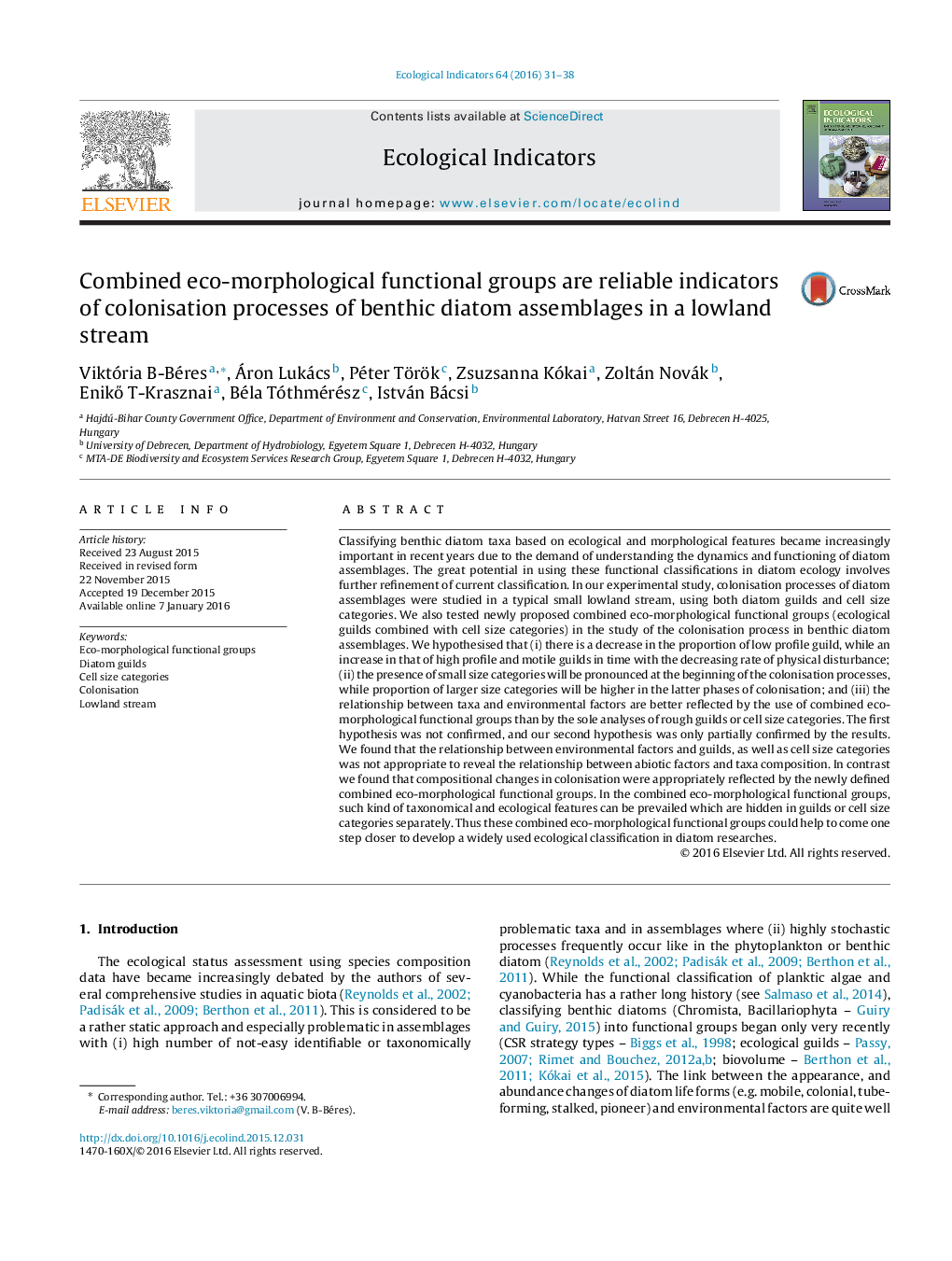| Article ID | Journal | Published Year | Pages | File Type |
|---|---|---|---|---|
| 4372934 | Ecological Indicators | 2016 | 8 Pages |
•Ecological and morphological classifications were studied during diatom colonisation.•Exclusive application of diatom guilds is not advised in colonisation studies.•Cell size categories and taxa showed different pattern along environmental factors.•Newly created combined eco-morphological groups were introduced.•The new classification resolved the contradictions occurred in former groups.
Classifying benthic diatom taxa based on ecological and morphological features became increasingly important in recent years due to the demand of understanding the dynamics and functioning of diatom assemblages. The great potential in using these functional classifications in diatom ecology involves further refinement of current classification. In our experimental study, colonisation processes of diatom assemblages were studied in a typical small lowland stream, using both diatom guilds and cell size categories. We also tested newly proposed combined eco-morphological functional groups (ecological guilds combined with cell size categories) in the study of the colonisation process in benthic diatom assemblages. We hypothesised that (i) there is a decrease in the proportion of low profile guild, while an increase in that of high profile and motile guilds in time with the decreasing rate of physical disturbance; (ii) the presence of small size categories will be pronounced at the beginning of the colonisation processes, while proportion of larger size categories will be higher in the latter phases of colonisation; and (iii) the relationship between taxa and environmental factors are better reflected by the use of combined eco-morphological functional groups than by the sole analyses of rough guilds or cell size categories. The first hypothesis was not confirmed, and our second hypothesis was only partially confirmed by the results. We found that the relationship between environmental factors and guilds, as well as cell size categories was not appropriate to reveal the relationship between abiotic factors and taxa composition. In contrast we found that compositional changes in colonisation were appropriately reflected by the newly defined combined eco-morphological functional groups. In the combined eco-morphological functional groups, such kind of taxonomical and ecological features can be prevailed which are hidden in guilds or cell size categories separately. Thus these combined eco-morphological functional groups could help to come one step closer to develop a widely used ecological classification in diatom researches.
